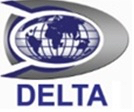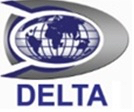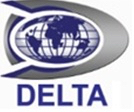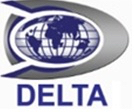Information
-
Audit Title
-
Document No.
-
Client / Site
-
Conducted on
-
Prepared by
-
Location
-
Personnel
SECTION 1: Premises and Housekeeping
1.1 Building and Floors
-
Obvious unrepaired damage buildings
-
Unsafe condition of floors, carpets, roadways, walkways, elevated platforms
-
Have these deviations have been reported.
-
Corrective action taken in timely manner
-
Premises divided into ares and delegated to Safety Representative/Supervisor/HSE (on plan or in writing)
1.2 Good lighting: Natural and Artificial
-
Sample lights out
-
Poorly lit areas
-
Reporting of lights out by safety reps/supervision/HSE monthly
-
Lighting survey and monitoring of light intensities
-
Have been survey results and recommendations been auctioned/planned
-
Safety glass or similar used in hazardous areas
1.3 Ventilation: Natural and Artificial
-
Study done for ventilation problems
-
Have study results and recommendations been applied.
-
Confined space area are identified, study done.
-
Ventilation extraction provided and maintained
-
Environmental monitoring/heat stress/sampling
1.4 Plant Hygiene Facilities
-
Facilities in a clean hygienic stage
-
No food in unauthorized areas
-
Regular monthly inspections
-
Checklist used signed, monitored
-
Is the problem being dealt wit
1.5 Pollution: Air, Ground, and Water
-
Study to determine whether a pollution problem exists
-
Have study results and recommendation been auctioned/applied
-
Hazardous waste identified
-
Obvious pollution/ uncontrolled fuel, oil leakage or hazardous waste
-
Is the problem being dealt with
1.6 Aisles and Storage Demarcated
-
Floors demarcated as per standard
-
Uninformed demarcation code used
-
Demarcation adhered to
-
Demarcation under electrical/mechanical equipment
1.7 Good Stacking and Storage Practices
-
Storage in cupboards, on shelves neat and tidy
-
No stacking on top of windowsills, cabinets, etc.
-
Unsafe conditions related to stacking an storage is reported and action taken
-
Stacking neat, stable and controlled
-
Storage in cupboards, on shelves neat and tidy
1.8 Housekeeping
-
Safety rep/appointees/HSE controlling areas by reporting (good general good housekeeping)
-
Under roof areas free of junk and materials
-
Corrective actions
1.9 Scrap and Refuse Bins Removal System
-
Scrap bins provided
-
Regular controlled removal
-
Separate bins for rags, oily materials, scrap, etc.
-
Bin locations demarcated
1.10 Color coding: Plant and pipelines
-
Uniform color coding
-
Color keyboard (legend) displayed
-
Knowledge of colors (own code acceptable)
SECTION 2: Mechanical, Electrical and Personnel Safeguarding
2.1 Machine/Hazardous Equipment guarding
-
All hazardous moving machine/ electrical parts within normal reach completely guarded/fenced/enclosed
-
All guards installed are listed,, checked and maintained
-
Inspection guards/front/back/back panels
-
Record of equipment issued
2.2 Lock-System and Usage "LOTO"
-
Written procedure available, updated and applied
-
One key, one lock, and one authorized person is applied whenever LOTO is required
-
Are tags and locks being used correctly
-
Are there task specific procedures available?
-
Are all affected staff trained?
-
Locks numbered and all use locks are recorded on permit
-
All equipment can be isolated and locked (including where fuses are drawn or valves in chemicals lines, etc.
-
LOTO are monitored, supervised and controlled by competent person and authorized person/LOTO station available and well arranged.
-
Do field activities match SEC policy and procedures
-
Type, quality and condition of LOTO tools and parts.......
-
Removal of locks and tags after job is finished is controlled and monitored.
2.3 Labeling switches, isolator a and valves
-
All isolator so/switches/circuits/cables and contact breakers labeled and well arranged
-
Are there emergency stop button, red colored?
-
Are all critical isolator so/valves identified (natural gas, main water supply, process emergency shut off, etc.)
-
Are all critical isolator so/valves identified (natural gas, main water supply, process emergency shut off, etc.)
-
Are all critical isolator so/valves identified (natural gas, main water supply, process emergency shut off, etc.)
2.4 Ladders, stairs, walkways (scaffolding)
-
Condition of ladders, stairs, walkways, scaffold, etc.
-
Ladders (portable/fixed) and scaffolds numbered, on registered
-
Are ladders inspected periodically for deficiencies and does supervisors ensure corrective actions are taken.
-
Stairways landing, open end platforms etc. toeboards.
-
Storage on offices, etc., handrai, toeboards and access
-
Stairways: four or more risers required handrail
2.5 Lifting gear and Records
-
Condition of cranes/man baskets/hooks/chains/slings, etc.
-
Listing gear identified and corrected in register
-
Safe Work Load marked.
-
Operator/driver trained and licensed
-
Safety latches on all hooks where practicable.
-
Storage and inspection of lifting tackle.
2.6 Compressed gas cylinders: Pressure vessels and records
-
Pressure vessel on register, tests and inspection carried our (test pressure 1.3 x MSWP)
-
Relief valves locked or sealed Red line on pressure gauge
-
Are all gas cylinder stored properly? And used in a safe manner.
2.7 Hazardous Substances Control
-
Alphabetical list of all substances
-
Has a hazardous substance risk assessment and analysis been conducted based on an alphabetical list?
-
Person designated to coordinate the list of MSD's
-
MSDS sheets available in department, by buyer and first aid.
2.8 Risk Assessment (HIRA)
-
Assessor a have attended risk assessment workshops
-
Hazard identification done covering all possible hazards using proper analysis techniques(audit hazel, fmea, etc)
-
Risk register for all workplace activities kept
-
Risk assessment completed as per standard
-
Probability, severity and frequency considered
-
All expected risk in the work place are assessed especially in risk areas
-
Quality of hazard identification and risk assessment reports. Effective analysis, evaluation and control measure
2.9 Motorized Equipment: Checklist, licensing
-
Condition of vehicles/equipment/seat belts use
-
Daily checklist completed by driver/ operator
-
Driving cab, load area are clean and tidy
-
Driver/operator training syllabus
-
Employee attended and passed defensive driving course
-
Internal licensing
-
Validity of Government licensež
-
Identification of drivers/operators
2.10 Portable Electrical Equipment
-
Condition of all cords, plugs, switches, etc.
-
All portable equipment identified, checked and register kept (all equipment fed through a flexible cable from plug point-110, 220, 380 or 500V)
-
Are faulty items marked/tagged and removed from use?
2.11 Electrical Equipment
-
List of all high risk electrical equipment and maintenance schedules
-
Records of maintenance available
-
Report to management on completed maintenanace
2.12 General Electrical Installation and Flameproof
-
Electrical installation safe/earth leakage, GFCI
-
Substations/panel/DB/faceplates locked or closed
-
Is there any unsafe temporary wiring? or any damaged or faulty switches, plugs, joints, fuse boxes or distribution boards, etc.
-
Flameproof equipment -annual checks and record of checks, e.g. Logbook
2.13 Hand Tools
-
Condition of hand tools
-
Regular checks by supervisor
-
Storage of tools (includes hammers, chisels, files, brooms, mops, spades, wheelbarrows, handcarts, etc.
-
Are damaged items marked/tagged and removed?
2.14 Ergonomics
-
Survey carried out using a checklist covering all premises, furniture and jobs
-
Develop checklists per standard
-
Operators comfortable<br>-seating/computer and work stations<br>-accessibility-valves, switches, levers, etc.<br>-heat stress workload
-
Ergonomics Commitee formed and top 10 hazards in current year identified
-
Follow-up action/surveys as required
2.15 Head Protectors
-
Risk assessment done/signs posted
-
Provided and worn where necessary
2.16 Eye Protectors
-
Risk assessment done/signs posted
-
Eye protection provided and worn
2.17 Footwear
-
Risk assessment done/signs posted
-
Safety footwear provided
-
Safe footwear being worn and in good condition
2.18 Protective Equipment
-
Risk assessment done/signs posted
-
Protective clothing provided and maintained
-
Arc flash PPE/levels defined/worn
-
All clothing worn: adequate, clean and in good repair
2.19 Respiratory Equipment
-
Risk assessment done/signs posted
-
Correct types provided, used checked and controlled
-
Personnel trained in use of respiratory equipment
2.20 Hearing Conservations
-
Noise survey conducted and areas zoned
-
Reduction of noise at source
-
Hearing acuity testing 6-monthly
-
Approved hearing protectors provided and worn
2.21 Safety Harness
-
Fall protection risk assessment done/sign posted
-
Safety harness provided and used
-
Conditions and regular checks
2.22 Hand Protection
-
Risk assessment done/sign posted
-
Gloves, barriers cream, etc. provided and worn/used
2.23 Control of Usage, issue maintenance and Record of personal protective equipment
-
Commitment obtained from wearer accepting conditions and requirements to wear ppe/arc flash ppe
-
Regularly checks by supervisor
-
Are damaged items marked, listed and removed immediately from service?
-
Record of equipment issued
2.24 Notices and Signs: Electrical, Mechanical,Protective Equipment, Symbolic Safety Signages
-
Standardized signs posted where required- in good condition
-
Display of signs of information and training
-
Electrical warning notices/live conductors and substations
-
Record of equipment issued
SECTION 3: Fire Protection and Prevention Protection
3.1 Fire Extinguishing Equipment
-
Fire risks identified and assessed for all areas
-
Action plans to correct deviations?
-
Adequate number of correct types of fire extinguishing equipment provided and correctly located.
3.2 Locations Marked, Floor Clear
-
Equipment location uniformly marked "keep clear"areas demarcated and maintained
-
Equipment unobstructed
3.3 MaintenAnce of Equipment
-
All fire extinguishing equipment numbered/identified on register and checked monthly
-
Maintenance at least annually
3.4 Storage of flammable and Explosive Material
-
Storage provided with suitable doors, windows (if any), ventilation, bund, etc.
-
Store/magazine neat, tidy and clean/bonding
-
List of flammables, precautions and storage capacity displayed?
-
Spill control/secondary containment
3.5 Alarm System
-
Independent alarm
-
Back up alarm
-
Is these test alarm
-
Employees know the sound of alarm
3.6 Firefighting Drill and Instruction
-
Fire teams adequate to risk as determined by fire risk assessment
-
Team available on all shifts
-
Fire drills-minimum once a year
-
At least one evacuation drill per year (where not possible), at least publicized plan
-
Someone in each department, other than fire team, trained in the use of fire extinguishers
3.7 Security Systems
-
Control of entry and exit of persons, vehicles, etc.
-
Security staff reporting unsafe practices/conditions
-
One person per shift trained on 5 star Safety Workshop
3.8 Emergency Planning
-
Emergency plans available, updated, signed
-
Separate firs aid and services teams trained and included in emergency drills
-
Coordinator to take control
-
Employee training on site emergency plan
-
Control Center/emergency equipment
3.9 Fire Prevention and Protection Coordinator
-
Appointed in writing, duties defined
-
Minimum training FPA one week course or similar
SECTION 4: Accident Recording and Investigation
4.1 Occupation Injury/Disease Record
-
Official record/register/record of injuries as required by legislation or claimed GOSI (work men's group)
-
Description of accident in register
-
Reportable accidents being reported to authorities
-
Minor injuries being recorded
4.2 Internal Accident/Near Miss Reporting and Investigation(Occupational Injury and/or disease)
-
Internal report of all injuries/diseases/near miss incidents
-
Investigation by designated investigator
-
Causes identified/basic/immediate
-
Effective recommendations
-
Action taken/signed by manager
4.3 Injury/Disease/Near Miss Statistics
-
Progressive statistical data: monthly and 12 months
-
Graphic display of experience/graph/bar chart
-
Analysis of injuries, part of body, department, etc.
-
Statistics circulated to top managers and discussed at safety committee meetings
-
Statistics displayed on notice boards
4.4 Internal Accident Reporting and Investigation (Damage, and other)
-
Internal repor-damage and other
-
Investigation:Designated investigator
-
Cause identified/basic/immediate
-
Effective recommendations
-
Action taken/signed by manager
4.5 Accident (Damage) Statistics Kept
-
Monthly and progressive 12 months
-
Estimated and/or actual costs
-
Statistics circulated to top managers
4.6 Cost of Risks:Apportioning of Costs
-
Estimated costs of injuries and damage
-
Graph circulated to managers monthly
-
Other insurance claims compared to premiums
4.7 Near Miss Incident and Accident Recall
-
Talks by foremen/supervisors used in conjunction with safety talks, meetings
-
Review of previous events/accident
SECTION 5
5.1 Manager Designated as Responsible for safety and health
-
Appointed in writing (whether full or part time)
-
Designation of subordinate managers
-
All managers and employees signed authority, responsibility and accountability for OSH commitment
-
Endorsement of pertinent program documents (e.g. inspection reports, committee minutes and accident investigations) visible felt leadership
5.2 Person(s) Appointed for Safety and/or Occupational Hygiene Coordination.
-
Pointed in writing (whether full or part time)
-
Duties and responsibilities defined
-
Safety training:5 Star System training workshops
-
Safety system inspecting and auditing Course/Nebosh 1 week
5.3 Designation of Safety Representatives in Accordance with SEC Requirements
-
Written appointment of Safety Representative (10%)
-
Routine discussion of duties
-
Monthly inspection of work areas using a checklists for reporting back
-
Training:Safety Representative Course/Accident Investigation/other
5.4 Safety Committees
-
Safety committees established as per standard
-
Are all departments/divisions/sections represented
-
Meeting once a month
-
Minutes kept, detailing action to be taken and responsibility for the action
-
Endorsed by Management and chairman of the safety committee
5.5 Other Communication Systems
-
Toolbox talks related to possible hazards applicable to the task in hand
-
Small group Activity System (productivity/quality Control Circles
5.6 First Aiders and Facilities
-
Facilities to meet SEC requirements (full time nurse)
5.7 First Aid Training
-
Five percent of complete staff to be trained or retrained to at least general level of first aid per year (Points allocated proportionally to % trained, e.g. 5% = 5, 4% = 4, etc.
5.8 Posters, Bulletins, Newsletters, Safety Films and Internal Competitions, etc.
-
Posters displayed at specified display points rotated at least once weekly and explained
-
Safety newsletter/bulletin-3 monthly
-
Safety Videos/DVD screened-all to see
-
Internal safety competition
5.9 Safety and Star Grading Board
-
Up-to-date Safety Notice board policy/standard
-
Star grading board and displAy of stars
-
Board promoting Road Safety
5.10 Suggestion Scheme
-
Formal/through safety committees
-
Record of suggestions and acknowledgements
5.11 Safety Reference Library
-
Safety Manual, Health and Safety system booklet, "black book", MSDS, 5 Star Standards
5.12 AnnUal Report-Safety Achievements
-
Annual achievements publicized (report y AU manager on KPI's, etc
5.13 Induction and Job Safety Training
-
Safety rules for all employees
-
Induction includes safety instructions
-
Job/task training includes the safety aspects of the job
5.14 Approved Safety Training Course
-
5% of staff, including management, trained each year (points to be allocated proportionally to the percentage of staff trained)
5.15 Medical Examinations
-
Pre-employment medical employees
-
Man-job specification available to medico
-
Regular medical school-e.g., scheduled substance food handlers, senior managers, equipment operators
5.16 Plant Inspection:Safety Reps
-
Monthly inspection by Safety Reps or appointees submitting reports
-
Checklist based on the 5-Star System being used
-
Correction actions taken- follow-up and monitoring of uncorrected/ completed observations
-
Reports considered and auctioned/signed by Management
5.17 Management Self-Audits
-
Audit by team including management
-
Each element of the 5 Star Safety System given consideration.
-
At least 6 monthly self-audit
-
Follow-up cation taken
5.18 Safety Specifications: Purchasing and Engineering Control New Plant and Contractors
-
Safety specifications for purchasing new plant: machine guarding, color coding, LOTO requirements
-
Re-commissioning/pre acceptance inspection, deviations corrected
-
Pre-bid documents completed and filled by all contractors
-
Contractors to comply with 5 Star safety rules, work area inspected, and deviations corrected
-
Contractors reporting injuries and fatalities
-
AU follow-up on deviations recorded and corrective action applied
-
After submission, all contractor's evaluations kept including safety program
5.19 Written Safe Work Procedures
-
Critical tasks identified and listed as per standard
-
CT identification carried by trained persons
-
Have all departments/divisions/sections with the AU been covered?
-
Have all CT (Critical Task) even discussed with subject/job experts to get input before being finalized
-
All CT .analysis documents kept for future revisions
-
Safe Work Procedures written as per standard and available JSP's
-
Do the SWP include tools, equipment and PPE/clothing needed to performed the tasks
-
Adoption of AU managers/senior manager/business line VP
-
Do the SWP include tools, equipment and PPE/clothing needed to performed the tasks
-
SWP is used and shared
-
SWP readily available
-
Are the procedures written in a simple, easy to read and understandable format? Reviewed Annually
-
Improvement suggestions, revision and workers feedback, is documented and reflected in SWP
5.20 Planned Job Observations
-
All PJ observations have been planned
-
Are all supervisors in possession of JSP's for their sections
-
Planned Job Observations carried out as per scheduled
-
Planned Job Observations carried out by trained supervisor or senior personnel
-
All task safe work procedures have been covered
-
Quality of schedule and observation reports
-
History of corrections made to SWPs
-
Actions taken to correct deviations/update job procedures
-
Changes shared and updated SWP's used
5.21 Work Permits
-
Areas/job identified where permits required
-
Issuers identified
-
Unified permit system used in all sites
-
Permits used and displayed where required
-
Isolation points clearly written on attached with WP
-
Permits completed and fully filledk
-
WP system quality
-
Finished jobs and equipment release are covered by issuers, form signed and site checked
-
Permits issued/received/signed off by responsible persons
5.22 Off The Job Safety
-
Off the job propaganda used
-
Off the job (road or other) accidents reported
-
Propaganda, training and education directed at the identified causes
-
Families and friends safety competitions
5.23 Safety Policy: Management Involvement
-
Policy signed and publicized
-
Managers taking ownership, active participation in safety activities and accountability
-
Employees family with policy
-
AU management involved, e.g. Attending evaluation/grading make resent actions, accident investigations, etc.










